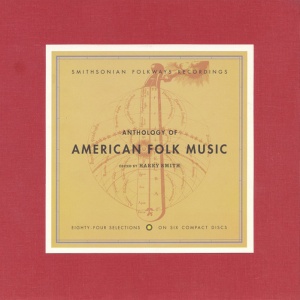“The Torture Garden: It’s where the Devil calls the tune . . . to play a concerto of fear!”
–Trailer for Torture Garden, 1967
In honor of Halloween, it’s time to look at the spookier side of musical instruments, specifically the roles some have played in mystery and horror fiction. On the one hand, the organ has the most sinister reputation of any instrument through its association with the Phantom of the Opera and his fictional descendants: there’s just something about the full organ’s portentous sound and the gloomy atmosphere of the Gothic cathedral that goes hand in hand with cobwebs and candlelight, so expect to hear many renditions of Bach’s Toccata and Fugue in D Minor (or at least the opening bars) during October. The organ, nicknamed “the king of instruments,” also fits nicely with the popular association of criminal masterminds with classical music: we like our villains to have refined taste, whether played by Vincent Price or Anthony Hopkins. In the same way, the organist seated at his instrument, surrounded by ranks of keyboards, pedals, and organ stops ready at his command, is a neat visual shorthand for a master manipulator, sitting at the center of a web, controlling everything around him. (In at least one case, the direct-to-video Disney sequel Beauty and the Beast: The Enchanted Christmas, the organ is the villain, conniving to make others to do its will even though it cannot move from its place.)
The violin, on the other hand, is often associated with the Devil, as in such pieces of music as Danse Macabre, L’Histoire du Soldat, and “The Devil Went Down to Georgia.” In folk tales, the Devil enjoys wagers, betting his own gold fiddle against the souls of his opponents. He may also bestow musical talent in exchange for a soul, a prominent part of the myth surrounding Tartini’s “Devil’s Trill” Sonata. Later, the great Italian virtuoso Niccolò Paganini was the subject of lurid rumors that he had sold his soul, and worse: Theosophy founder Madame Helena Blavatsky included Paganini in her story “The Ensouled Violin,” and graphically embroidered on the notion that the strings of Paganini’s violin were made from human intestine, and that his uncanny ability to mimic the human voice with his playing actually came from a spirit trapped within the instrument.
A similar story is part of the mythology of the Blues: Robert Johnson was supposed to have met the Devil at a crossroads at midnight, where he traded his soul for his legendary guitar-playing ability. The legend formed the basis of the Ralph Macchio film Crossroads and was parodied on Metalocalypse (in the episode “Bluesklok”). Interestingly, Elijah Wald, in his book Escaping the Delta, has shown that the same story was originally attributed to a Tommy Johnson and then transferred to Robert when his legend outpaced Tommy’s. Naturally, the whole thing has roots in folklore: Wald points out, “When Harry Middleton Hyatt collected stories of musicians going to the crossroads to gain supernatural skills, as part of a vast study of Southern folk beliefs in the late 1930s, he reported as many banjo players and violinists as guitarists,” as well as an accordionist.
Why is there such a connection between fiddling and death? In the Middle Ages, instrumental music was considered both profane and frivolous, closely associated with itinerant, always-suspect actors and minstrels and the drunken singers in taverns. In depictions of Death (usually as a skeleton, the same as now), musical instruments were often a symbol of the sinfulness, vanity, and futility of all human activity, not just music. (The popular image of Nero “fiddling while Rome burned” probably owes much to this symbolism, as the violin had yet to be invented in Nero’s day; likewise, contrast the supposed indolence of grasshoppers with the industry of ants.) The image of a grinning skeleton “playing” his victims into the grave may have struck the medieval viewer as cruel irony, a just punishment, or as a warning.
According to one author, the connection between the violin and mortality was more than just poetic: in 2006, Rohan Kriwaczek published An Incomplete History of The Art of Funerary Violin. According to Kriwaczek, there had once been a Guild of Funerary Violinists, whose work, repertoire, and indeed their very existence had been suppressed by the Vatican during the Great Funerary Purges of the 1830s and ‘40s. After 1846, the few remaining members of the Guild went underground, and Kriwaczek, eventually entrusted with their legacy, was able to piece together this secret history and bring it to the public. Kriwaczek describes the Funerary Violinist as playing a potent intercessionary role:
In his tone the violinist must first convey the deep grief that is present in the gathering, and then transform it into a thing of beauty. By the time he is finished, a deep and plaintive calm should have descended, and the bereaved should be ready to hear the eulogy. . . . The violinist’s is a position of great responsibility, akin in many ways to that of a priest or shaman, and should not be taken lightly.
Alas, the book was a hoax, supposedly concocted by Kriwaczek to increase his bookings as a violinist at—you guessed it—funerals. Still, I can’t help but feel that Kriwaczek’s story, with its dueling Funerary Violinists, buried secrets, and cameos from outsized characters including composers, Popes, and virtuosi, would make a smashing TV program, a historical saga with more than a touch of gothic intrigue.
Sometimes the instrument is cursed: in the short “Oh, Whistle, and I’ll Come to You, My Lad” by the master of the English ghost story M. R. James, it’s an ancient bronze whistle (proving that another James title, “A Warning to the Curious,” could equally apply to almost all his stories):
He blew tentatively and stopped suddenly, startled and yet pleased at the note he had elicited. It had a quality of infinite distance in it, and, soft as it was, he somehow felt it must be audible for miles round. It was a sound, too, that seemed to have the power (which many scents possess) of forming pictures in the brain. He saw quite clearly for a moment a vision of a wide, dark expanse at night, with a fresh wind blowing, and in the midst a lonely figure–how employed, he could not tell. Perhaps he would have seen more had not the picture been broken by the sudden surge of a gust of wind against his casement, so sudden that it made him look up, just in time to see the white glint of a sea-bird’s wing somewhere outside the dark panes.
Just as frequently it’s a MacGuffin that activates the plot: a Stradivarius is as valuable as a van Gogh, and serves as well as any other objet d’art as the motivation in a murder mystery. An example is the three-quarter sized Strad, the Piccolino, at the center of Gerald Elias’ mystery Devil’s Trill, the first of a series centered on violinist-sleuth Daniel Jacobus. And despite its unusual varnish, the titular instrument of the 1998 film The Red Violin is haunted more by tragedy and human foibles than by any supernatural evil.
The weaponized instrument is an infrequent literary device, but there are a few examples: the murder in Dame Ngaio Marsh’s Overture to Death is accomplished by a revolver hidden inside an upright piano, rigged to fire when the pianist plays the third chord of Sergei Rachmaninoff’s Prelude in C-sharp Minor, a Rube Goldberg arrangement that sounds about as practical in real life as this:
Likewise, it doesn’t seem that it would be that hard to escape the vengeance meted out by the grand piano in “Mr. Steinway,” a section of the 1967 anthology film Torture Garden, based on stories by Robert Bloch. In the story, the piano in question belongs to a prominent virtuoso, a gift from his mother, and his devotion to it is tested when a young lady (played by Barbara Ewing) enters his life. The black wing shape of the piano is a looming presence in the film version, always in the background or casting its shadow over the doomed couple, and the Oedipal implications of the pianist’s relationship with his mother, never seen but personified by the piano, are left as unspoken subtext. So far, so good, but by the time the piano lurches into motion and pushes the intruding girl out the window, we’ve entered the realm of delirious high camp. The lesson: music is a jealous mistress.
Finally, as a bonus, I present one of the most bizarre (and gratuitous) examples of this trope, from the 1976 film The Town That Dreaded Sundown: death by trombone. Happy Halloween!























